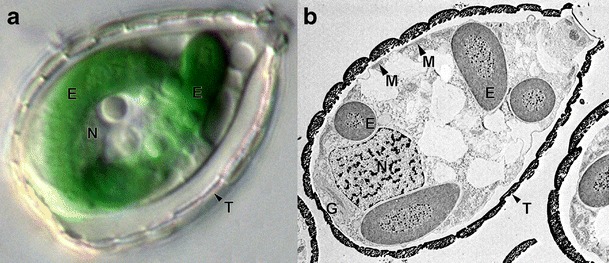Fig. 1.

Paulinella chromatophora viewed under the optical (a) and electron (b) microscope. This testate filose amoeba is surrounded by the cell wall called theca (T), which is composed of silica scales. Apart from typical eukaryotic organelles such as nucleus (N) and mitochondria (M), it harbors two cyanobacterium-derived endosymbionts (E). The endosymbionts are photosynthetically active, deeply integrated with the host cell, and their genome have been reduced to one third in comparison to their cyanobacterial ancestors. Moreover, the endosymbionts import proteins encoded by genes that were transferred from the endosymbiont to the host nuclear genome. This import proceeds co-translationally via the host endomembrane system, involving the Golgi apparatus (G). All these features justify to call Paulinella photosynthetic endosymbionts true cell organelles. The Paulinella images were kindly supplied by Dr Eva Nowack
